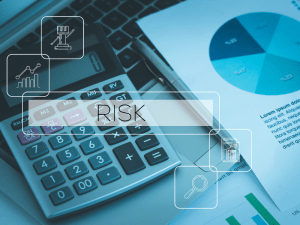How to Determine Your Client's Risk Capacity
Determining the risk profile is essential so that you may construct a feasible financial strategy for your client’s goals. However, it should be well understood that a client’s financial profile includes their risk tolerance and their risk capacity. In this article, although we will be focusing on the latter one and why it is significant to determine your client’s risk capacity let’s first understand the difference between the two.
Risk Tolerance versus Risk Capacity
Risk tolerance and capacity are two very different concepts although intertwined with each other. Only by assessing both can you possibly create a financial plan to achieve the objective that you and your client mutually come up with. Risk tolerance is more of an objective concept as it deals with the willingness of a client to take on risk. In simple words, how much risk can your client tolerate mentally and emotionally, before they are sent into panic mode?
However, risk capacity is a numbers game. Since it is a more subjective matter, it is easier to assess than risk tolerance. It is your duty as a financial advisor to determine where your client’s portfolio stands currently and the amount of risk it can bear. Although, risk capacity might be an easier concept to explain to your client as its specifics can be measured and quantified, explaining how it correlates with risk tolerance and the impact it has on long-term financial terms is another story.

Related: How to Determine Your Client’s Risk Tolerance!
Risk Capacity In Correlation With Risk Tolerance
Explaining financial jargon to a client who is unfamiliar with it can be a great challenge. However, being a financial advisor requires you to be able to teach your client the essential terminology in order to gain a better understanding of their perspective and insights for their future goals.
Let's take an example of a client who has a tendency to always play it safe and prefers taking the less risky approach when it comes to investing, despite the fact they have a high asset and low liability portfolio. Their fear of losing money prevents them from pursuing any financial decisions with uncertain positive outcomes.
However, one may ask, is there any decision in the financial world that guarantees 100% success? Hardly: don’t forget the unexpected and shocking financial crisis of 2008 in the United States which crippled the economy. Therefore, before building a financial plan, your client needs to be educated about what the risk-return trade-off is: An idea that basically, you are expected to get high returns for taking bigger risks. In order to reach your long-term financial goals, you may be required sometimes to make some high-risk investments.
Similarly, consider another client who does not shy away from taking the all-hands-in approach despite the fact their portfolio may not be financially capable to withstand any losses. The ideal approach would require them to proceed with extra caution due to their low assets and high liabilities. However, their “dare-devil” approach could eventually lead them to sooner or later suffer losses, therefore, creating hindrances to the financial goals they hope to achieve.
How To Measure Client's Risk Capacity
Since risk capacity is based on numerical facts and can be quantified, it is much easier to measure it and place a value on it. The importance of determining lies in the fact that if not managed properly it may hinder your financial goals in case of an unprecedented market downturn or personal financial crisis. Do you have a backup plan for such a scenario?

Assessing risk capacity generally involves 3 factors: investment portfolio size, time horizon, and income from other sources. It is the combination of all three that gives you a big picture of how much risk your portfolio can manage.
Calculating The Size Of An Investment Portfolio
Calculating the size of an investment portfolio is a very complicated task and can be done in several ways. There is no one way to do it although some methods provide a more accurate picture than others. One can conveniently find software and apps online to help you calculate portfolio size. Even still, the methods can vary and the list of things to measure isn’t short. The following are some general financial investments to include when measuring a portfolio size.
- Stocks
- Bonds
- Cash
- Cash equivalents
- Closed-end funds
- Exchange-traded funds
- Commodities
Make sure to explain to your client that stocks and bonds are considered to be the backbone of a portfolio although, a portfolio can grow in size with other assets as well such as gold, art collectibles, real estate, and so forth. Ideally, a portfolio should be made as diverse as `possible to ensure its growth. How successfully you manage your portfolio and can maintain its health is essential to your long-term financial goals.

Time Horizon
Time horizon is the time period someone holds on to an investment until they finally have the need to cash it. Time horizons are normally determined through financial goals and the moment you actually make the investment. They generally can be categorized as such:
Short-term Investment Horizon
This sort of investment is expected to last less than 5 years. Investments with a short-term time horizon are best suited for those who would require a large amount of cash in the near future or will be approaching retirement soon. For example, someone who is saving up to buy a house in the near future would require an investment with a short-term time horizon as they would be required to cash out their investment in a few years for their house.
Medium-term Investment Horizon
This investment would be expected to be held for three to ten years. The reason could be college, marriage, or a house in the distant-but-near future. An investment with a medium-term horizon would require a strategy that balances both high and low-risk assets so that the financial goal can be achieved.
Long-term Investment Horizon
these investments can go from ten to twenty to even more decades down the road. The most common investment with a long-term horizon is saving for retirement. Generally, such investments can include high-risk investments as they have the potential for high returns and greater rewards.
So how is the time horizon related to risk capacity? It is essential because it guides you about the amount your client needs to be investing or saving to reach a financial goal, whether short or long term, and that helps you determine the capability of your portfolio to handle risk: risk capacity.
Income From Other Sources
After calculating your investment portfolio, anything and everything else simply falls into this category. This includes:
- Earned income
- Business income
- Interest income
- Capital gains (acquired through the sale of assets such as art, collectibles, stocks, business, and loans)
- Dividend income
- Rental income
- Royalties or licensing income
Having multiple means of income keeps you from relying on one source of income so the more the merrier. Instead of relying on an earned income only, you have the option to rely on any other source in case of sudden job loss or other emergencies. Furthermore, it can reduce the number of hours you work and give you a chance to maintain a healthy work-life balance.
Closing: Finding the Balance To Achieve Goals
For most people, the word “risk” in general induces feelings of apprehension, uncertainty, and even fear thus can lead to hesitancy to take certain actions. These people we consider to be low-risk-tolerant. For others, taking a financial risk is like the next exciting adventure and a new venture for them to explore. Risk capacity all has to do with your financial situation and how much risk your portfolio can handle.

In either case, it is your job to ensure your client understands that how willing or unwilling they are to take a risk should be predetermined by the fact of how capable their portfolio is to risk. It is your job to ensure that your financial strategy is a balance between both risk tolerance and capacity both short-term and long-term so your client can take comfort in the fact that their financial goals are reachable.




